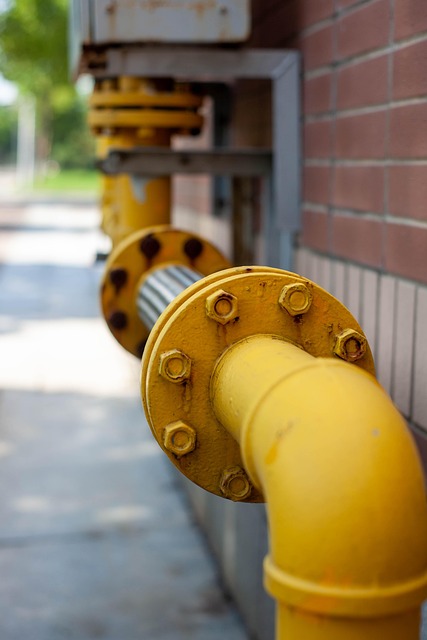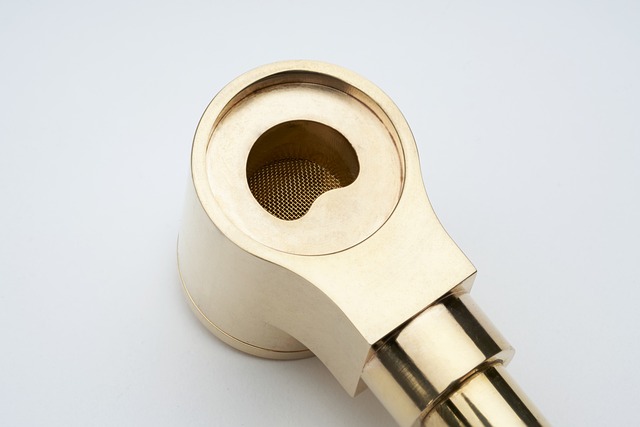DIY pipe insulation is a cost-effective way for homeowners to improve energy efficiency and prevent burst pipes in cold weather. By insulating exposed pipes, you create a temperature barrier that reduces heat loss, keeping water at the desired temp. This is crucial in older homes or areas with extreme climate variations. Using accessible materials like polyurethane, fiberglass foam, rock wool, or cellulose insulation, along with precise measurement and secure installation, DIY pipe insulation offers significant long-term energy savings.
Discover the transformative power of DIY pipe insulation and why it’s a crucial task for any homeowner. This comprehensive guide uncovers the significance of insulating pipes, not just for energy efficiency but also for preventing burst pipes and reducing heating bills. We’ll walk you through a simple, step-by-step process to ensure your plumbing system is well-protected. Get ready to roll up your sleeves, as mastering DIY pipe insulation is easier than you think!
- Understanding the Importance of Pipe Insulation
- The DIY Approach: A Step-by-Step Guide
- Materials and Tips for Effective Pipe Insulation
Understanding the Importance of Pipe Insulation

Pipe insulation is an often-overlooked aspect of home maintenance, but it plays a crucial role in energy efficiency and preventing pipes from freezing during cold weather. Understanding the importance of DIY pipe insulation can help homeowners save money on their energy bills and avoid costly repairs caused by burst pipes. By insulating exposed pipes, you create a protective barrier that regulates temperature, reducing heat loss and keeping water at the desired temperature as it flows through the plumbing system.
This simple yet effective measure is particularly vital in older homes or areas with extreme climate variations. DIY pipe insulation allows homeowners to take control of their energy consumption by minimizing heat transfer and preventing pipes from becoming ice-cold during winter. With the right materials and tools, insulating pipes yourself is an accessible project that can deliver significant long-term benefits.
The DIY Approach: A Step-by-Step Guide

Taking on DIY pipe insulation can be a rewarding project for homeowners looking to enhance energy efficiency and prevent freezing pipes. With the right tools and materials, you can tackle this task yourself, saving money and gaining valuable hands-on experience. Here’s a simple step-by-step guide to get you started:
1. Identify Pipes Needing Insulation: Begin by tracing the paths of your plumbing system, focusing on pipes exposed to extreme temperature variations, such as those in attics, basements, or exterior walls. Label and mark these areas for easy reference.
2. Gather Materials: You’ll need pipe insulation in the appropriate length and thickness, a utility knife, a measuring tape, and possibly a heat gun or hair dryer (to expand the insulation slightly before installation). Choose insulation with a high R-value for maximum efficiency.
3. Measure and Cut Insulation: Using your measuring tape, determine the exact length needed to cover each pipe segment. Cut the insulation using a utility knife, ensuring cuts are straight and precise.
4. Install Insulation: Starting at one end of the pipe, wrap the insulation around it, overlapping each layer slightly with the previous one. Use a heat gun or hair dryer to expand the insulation slightly, ensuring a tight, secure fit. Continue wrapping until all pipes are fully covered.
Materials and Tips for Effective Pipe Insulation

When it comes to DIY pipe insulation, choosing the right materials is key for effective results and energy savings. Traditional options include foam pipe insulation, made from materials like polyurethane or fiberglass. These are widely available, inexpensive, and easy to cut and fit around pipes of various sizes. For a greener alternative, consider rock wool or cellulose insulation, which offers excellent thermal resistance and is more environmentally friendly.
When insulating pipes, ensure a snug fit by measuring the pipe diameter accurately. Cut the insulation to length using scissors or a utility knife, leaving a bit of extra material for sealing. Apply adhesive or mechanical fasteners to secure the insulation in place, especially at joints and endpoints. Remember, proper insulation should create a continuous barrier, so seal all gaps to prevent heat loss or gain. This simple DIY step can significantly impact your home’s energy efficiency.
Pipe insulation isn’t just about preventing frozen pipes; it’s a crucial step in enhancing energy efficiency, reducing heating/cooling costs, and ensuring your home’s plumbing system lasts longer. By taking on DIY pipe insulation, you’re not only saving money but also contributing to a more sustainable living space. With the right materials and straightforward steps outlined in this guide, there’s no reason not to embark on this simple yet impactful project. So, roll up your sleeves and get ready to insulate – your wallet and the planet will thank you!
